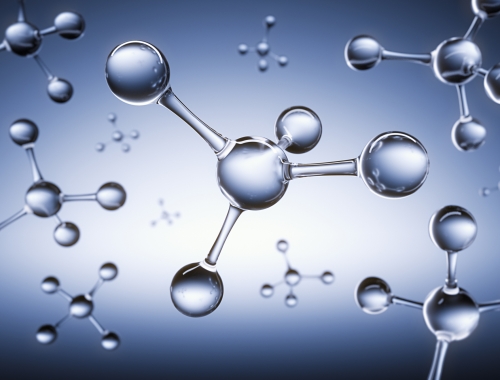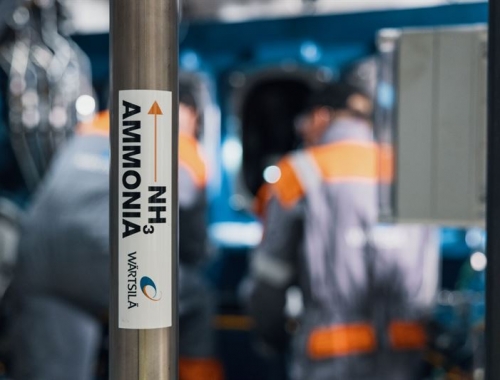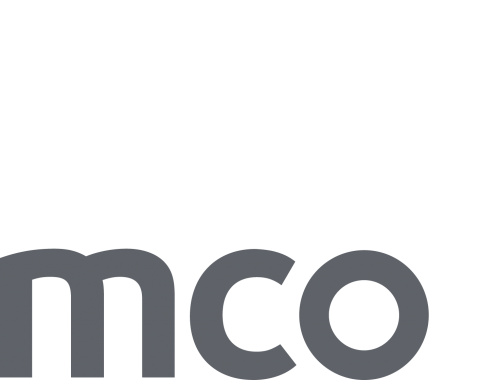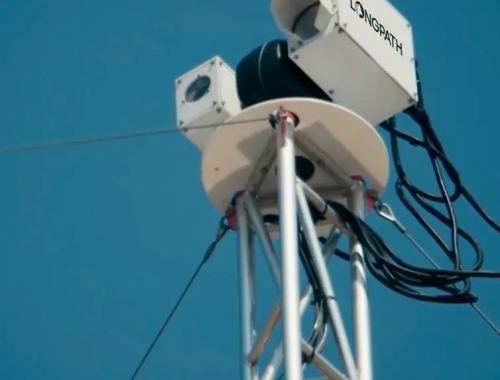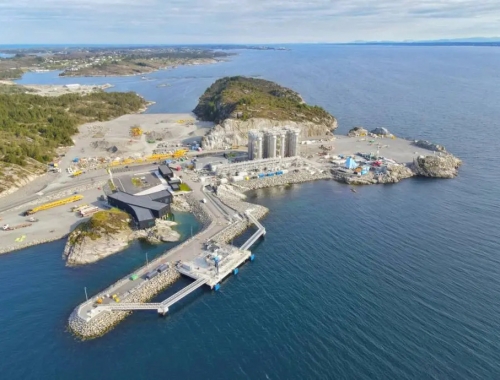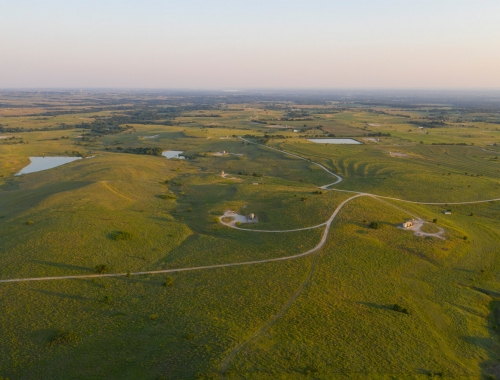OGMP 2.0: a gold standard for managing methane emissions
SUMMARY
Giulia Ferrini leads the Oil and Gas Methane Partnership 2.0 (OGMP 2.0), UNEP’s flagship reporting and mitigation programme for the oil and gas sector, and she oversees the International Methane Emissions Observatory (IMEO)’s operations. She discusses with Gas Pathways the initiative’s achievements so far, the benefits for members and the further work that lies ahead.
By Mike WeberPOSTED IN:
Q: What are the commitments that members of the OGMP 2.0 agree to and what are some of the benefits for oil and gas companies of joining the initiative?
A: OGMP 2.0 member companies commit to report annually their methane emissions across all operated and non-operated assets using the most accurate methods and science-based measurements and to adopt a five-year methane reduction target. The target and the company’s total emissions are publicly disclosed in the annual report published by UNEP’s International Methane Emissions Observatory.
OGMP 2.0 establishes five reporting levels, with the highest level (Level 5) requiring that companies reconcile their source-level (Level 4) emission inventories with measurements at the site level. This stage is crucial to ensure that the inventory doesn’t overlook any major sources and gives companies the necessary insights to drive mitigation initiatives. Available methane data today is largely based on generic emissions factor-based calculations, which have been repeatedly proven by science to dramatically underestimate measured methane emissions levels.
But OGMP 2.0 is not about reporting for the sake of reporting. Accurate emissions data is absolutely necessary to allow companies to mitigate their emissions in a targeted way. Reducing methane emissions from the oil and gas sector is one of the easiest and fastest ways to mitigate global warming in the short term, which is the ultimate goal of our work at UNEP.
OGMP 2.0 is not only a rigorous reporting framework, but also an important community of practice, currently gathering over 100 member companies from around the world, representing all segments of the value chain. Having access to experience and best practice sharing among industry peers is one of the key benefits of OGMP 2.0 according to our members. We organise an annual implementation conference and regular experience sharing workshops on technical topics to multiply the learning opportunities for member companies. Collaboration and knowledge transfer across the oil and gas value chain is critical to accelerate the industry’s collective progress.
Finally, signing up to OGMP 2.0 means joining a community of methane management leaders in the oil and gas sector. The partnership is increasingly recognised as a credible indicator of companies’ performance, providing regulators, investors and the general public with assurance that companies reaching the Gold Standard manage their emissions in a transparent and responsible way. By doing so, they demonstrate their commitment to the objectives of the Paris Agreement and the Global Methane Pledge, an EU-US-led effort joined by 150 countries committed to reducing global methane emissions by 30% by 2030.
Q: How can companies in the oil and gas sector begin the process of joining OGMP 2.0 and how long does the process take to become a member?
A: We organise introductory calls with interested companies to present the initiative in more detail and answer operators’ questions.
To join OGMP 2.0, companies sign a memorandum of Understanding with UNEP. By signing it, they formally express adherence to the OGMP 2.0 Reporting Framework, which is annexed to the MoU. This process usually takes around two weeks from UNEP’s side.
We accept new members on a rolling basis. It’s important to keep in mind that new companies start reporting the following calendar year after joining, e.g. if MoU is signed in 2023, the first reporting is due in 2024, by May 31.
After signing the MoU, we offer all new members another introductory call – a more technical one to walk them through our Starters Guide, detailing the reporting requirements, and to answer any remaining technical questions.
Q: ESG has soared to the top of the agenda for investors, lenders, buyers, customers, and employees. Tell us about how OGMP 2.0’s comprehensive measurement-based reporting framework is building trust and transparency in the measurement and mitigation of methane emissions across the oil & gas value chain?
A: OGMP 2.0 is the only comprehensive and measurement-based reporting framework for the oil and gas industry. We know that accounting methods for methane emissions are flawed because they rely on estimates that we call “generic emissions factors”, which dramatically underestimate emissions. In reality, you can only have an accurate picture of when and where methane emissions occur when you go out and measure them, hence the OGMP 2.0’s focus on direct measurements.
The partnership directly engages oil and gas companies that have the agency to reduce methane emissions on the ground. Our goal is to improve operators’ understanding of their emissions’ profiles and help companies use this knowledge to mitigate emissions, starting with the most material sources.
Because of its comprehensiveness and focus on direct measurements, OGMP 2.0 is increasingly recognised as a global measurement, reporting and verification (MRV) standard and a credible indicator of companies’ performance that can help inform policy, investment and consumer decisions. For example, OGMP 2.0 serves as a basis for the MRV part of the EU Methane Regulation that is being negotiated in Brussels and influenced the development of the Colombian methane legislation, closely linked to our standards.
Q: What does it take for companies to achieve OGMP 2.0’s Gold Standard for responsibly managing methane emissions?
A: The Gold Standard is attributed on an annual basis, based on the analysis of companies reporting. To obtain it, a member company must report all its material assets at Level 4 (within 3 years for operated ventures and 5 years and for non-operated ventures) and demonstrate efforts to move at least one-third of assets to Level 5, with year-over-year improvement.
Once achieved, the Gold Standard can be maintained by increasing reporting levels year over year – showing continued progress towards Levels 4 and 5 in its annual reporting, and ultimately reporting annually at Level 5 (reconciliation of source-level and site-level).
Before the set timeline of three and five years, companies can achieve the Gold Standard Pathway status if they comply with the main OGMP 2.0 reporting requirements I mentioned which are – setting a performance target, submitting a credible implementation plan and an annual emissions report.
Q: For smaller developers that are limited in workforce and have tighter margins, why should they join OGMP 2.0? Is there any cost to join and what kind of support and helpful resources and guidance are provided to them?
A: There is no fee associated with joining OGMP 2.0. However, member companies commit time to prepare the annual reporting, attend our meetings and engage in the development of technical guidance.
The beauty of OGMP 2.0 is that membership is not only limited to leading industry players. The partnership is showing that all companies, irrespective of their size, resources available and being at different stages in their methane journey, are taking action to manage methane emissions, including small independent producers or regional distribution and transmission companies.
There is a lot of guidance available to support member companies in their reporting and we continue developing additional ones to respond to operators’ needs. It is important to mention that all OGMP 2.0 guidance is approved by consensus by all members and is principles based, rather than rules-based - leaving room for operators’ judgement. We recognise the need for some flexibility given that our members have very different portfolios and are on different stages in their methane journey.
For example, we developed detailed guidance for the reporting templates, recommendations on uncertainty and reconciliation between source- and site-level emissions, as well as a series of technical guidance documents (TGDs) outlining quantification methodologies for key sources of methane emissions. Companies are also invited to consult the implementation plan guidance and scorecard, which outlines the elements to be covered in the plan and the scoring system that UNEP uses to evaluate them. We also created a non-mandatory template for the plan to facilitate its development. All these documents are available on our website.
In addition to that, all members can benefit from the expertise of the OGMP 2.0 team, which is always available to organise bilateral calls with companies that can, for example, share their draft implementation plans and reports in advance of the annual deadline and benefit from an informal review and discussion.
Finally, we encourage our member companies to make the most of the experience and knowledge sharing opportunities created by OGMP 2.0: actively engage in the technical workshops, learn from each other, and connect to companies facing similar challenges and testing different solutions to address them. Such peer learning can result in better reporting of methane emissions, accelerated mitigation action, and saved time and costs in terms of research and development of measurement technologies and methodologies.
Q: OGMP was first launched in 2014 under the Climate and Clean Air Coalition. In November 2020 it was ratcheted up in scope and ambition as OGMP 2.0. Tell us more about the areas you raised ambition in as OGMP 2.0?
A: When the United Nations Environment Programme (UNEP), under the umbrella of the Climate and Clean Air Coalition (CCAC), launched OGMP back in 2014 many companies had limited knowledge about managing methane emissions from oil and gas operations. Even though the membership of the original OGMP was limited to a handful of upstream companies, it had the merit of increasing awareness on the crucial need to reduce methane emissions and placing methane on top of companies’ environmental agenda.
A lot has changed since 2014. We have heard a clear call for action from the scientific community with, for example, the IPCC Assessment Report (April 2022) concluding that methane emissions must be cut by a third by 2030 to keep the 1.5°C goal of the Paris Agreement alive. Only a few years ago policy makers and ordinary citizens didn’t fully understand the nature of the climate crisis. Today, the climate crisis is at the top of the political agenda and at the heart of citizens’ concerns because every corner of the world is witnessing its impacts.
OGMP 2.0 was launched in 2020 after an extensive strategic review of its initial framework. We concluded that the level of initial ambition was no longer high enough to meet the challenge of climate change. OGMP 2.0 is now the most comprehensive and advanced measurement-based reporting initiative, covering all segments of the value chain and expanding its membership in all regions of the world.
Q: Can you tell us more about how OGMP 2.0 is collaborating with UNEP’s International Methane Emissions Observatory (IME) to develop a groundbreaking database of empirically verified methane emissions and some of the major benefits this database will provide?
A: OGMP 2.0 data is a crucial component of the global database of methane emissions that IMEO is establishing. IMEO, launched at the G20 Leaders’ Summit in 2021, collects and reconciles methane data from different sources - scientific measurement studies, satellites, national inventories and industry reporting through OGMP 2.0. IMEO manages OGMP 2.0 companies’ data in a confidential way, in line with the provisions of the Reporting Framework.
The mission of IMEO is to provide free, reliable, actionable data to the individuals who act to reduce methane emissions. IMEO data that can be used by all stakeholders in the rapidly growing ecosystem of governments, companies, investors, researchers, NGOs and other entities engaging in this crucial climate challenge.
A recent key IMEO development is the launch of Methane Alert and Response System (MARS) at COP28 to accelerate the implementation of the Global Methane Pledge by scaling up detection and action on major methane emissions sources. MARS works with existing global mapping satellites to identify very large methane plumes and hot spots, followed by an analysis to attribute events to specific sources.
MARS is an IMEO initiative, separate from the OGMP 2.0 reporting requirements, but volunteering OGMP 2.0 member companies play an important role as entry points to agents that can act on the ground once a large emitting event is detected by MARS. In exchange, OGMP 2.0 operators get the benefit of being notified about any major leaks happening in their facilities at the very beginning of the formal notification process. IMEO will report on the first results of MARS by COP28.
Q: Currently, OGMP 2.0 member countries represent 35% of the global oil and gas production. What are some of the reasons why there’s still a considerable amount of the market yet to join the initiative and what are you focusing your efforts on now to get more members to join?
A: Our members now jointly represent over 35% of global oil and gas production in more than 60 countries, over 70% of LNG flows, more than 20% of global natural gas transmission and distribution pipelines and over 10% of global storage capacity.
We have recently celebrated an important milestone: in March, the partnership has reached and quickly exceeded 100 members (106 as of May 2023) – a significant increase from 62 companies since 2020 when the partnership was ratcheted up in scope and ambition to become OGMP 2.0.
The partnership has also expanded to previously underrepresented regions and countries such as the US, Latin America, Africa and Asia. The recent new members include some of the world’s leading oil and gas companies, such as US-based Cheniere, ConocoPhillips, Devon, Pioneer, and major national oil companies like Petronas, Petrobras or EP Petroecuador.
We are in discussions with many more interested companies from around the world. Our current member companies also support our recruitment efforts by promoting the Partnership among their peers.
While we celebrate OGMP 2.0 progress, we also recognise that there is more work ahead of us and more collective progress is needed. Some of the remaining barriers slowing it down include the lack of awareness about the climate benefits of methane mitigation, the lack of actionable data in many companies that still rely on emissions factors and insufficient capital investments in methane mitigation due to conflicting investment priorities.
We now know that slashing methane is not only feasible and affordable, but also the single fastest way to slow global warming, with the most immediate effects in the short-term. Furthermore, reducing methane emissions has never been so cost-effective – all necessary global abatement costs represent less than 1% of the windfall profits gained by the oil and gas companies around the world in 2022, according to the International Energy Agency (IEA). The IEA also calculated that the combination of policy measures and abatement opportunities could bring 210bn m3 of gas to the global market that is experiencing security of supply tensions.
Methane emissions are still the Achilles heel of the industry. The sector should step up its efforts to demand high-quality data, improved transparency and accountability from business partners and peers to bring the laggards along. Eventually, what is at stake is the sector’s collective reputation, which could affect its social licence to operate. We will only succeed if all companies join OGMP 2.0.


